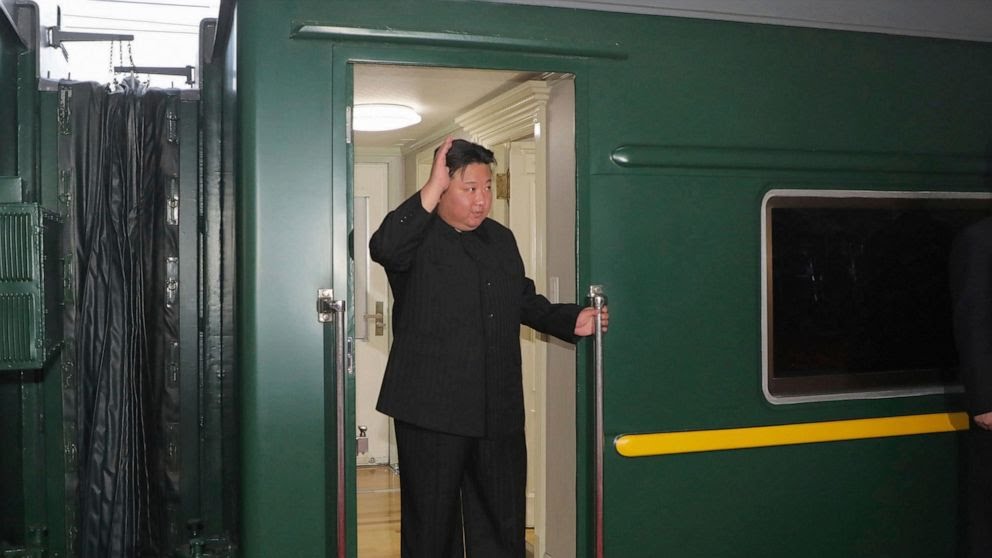Generally people from every corner of the world intend to travel by airplane when they are set to go for a long journey; it is not only a luxury but also saves their time. Day by day the cost of plane travel is becoming cheaper too. If we talk about country leaders or other diplomatic personnel, they must travel by airplane when they travel to another country. However, when it comes to North Korea’s Supreme Leader, Kim Jong Un, the choices he makes stand out. Kim Jong Un often travels by a special armored train stead of flying. Why does Kim Jong Un prefer train travel on the ground to air travel or flying in the sky? This article, brought to you by the Neo Observer Editorial Panel, delves into the intriguing story behind Kim Jong Un’s fear of flying and how it has shaped his distinct travel choices. We explore the historical context, the exceptional features of his travel methods, and the implications of these choices on international diplomacy.
At the core of Kim Jong Un’s travel preferences lies a deeply rooted fear of flying. What makes this fear even more intriguing is that it’s not unique to him; it’s a trait passed down through generations. His grandfather, Kim Il Sung, and father, Kim Jong Il, both shared this fear. It has its origins in a traumatic event involving a plane explosion, an incident that scarred the Kim family and triggered their shared “plane fear.”
Kim Jong Un’s avoidance of air travel isn’t merely about convenience; it’s also a testament to the opulence that accompanies him on his train journeys. His custom-built armored train is a marvel of luxury and security, replete with large bedrooms, sitting rooms, and even a distinctive long pink sofa. Advanced communication facilities ensure uninterrupted connectivity, while formidable security measures turn the train into an impenetrable fortress on wheels.
One of the most vivid examples of Kim Jong Un’s commitment to avoiding air travel is his 2019 journey to Vietnam. This voyage carried enormous significance, as it brought him to the negotiating table with former U.S. President Donald Trump. To meet Trump, Kim embarked on a journey that covered an astonishing 4,500 kilometers (2,800 miles) by train, a testament to his unwavering dedication to circumvent air travel, even when facing critical diplomatic engagements.
Kim Jong Un’s preference for train travel presents distinct advantages. Enhanced security and control over his movements are among the primary benefits. However, train travel has its drawbacks, primarily in terms of time and logistics. Nevertheless, there have been instances when he chose air travel, showcasing flexibility in his transportation choices.
Kim Jong Un’s international travels have taken him to various countries, each with its own diplomatic significance. These visits play a pivotal role in shaping North Korea’s foreign policy. Beyond personal preferences, these diplomatic endeavors hold broader implications for international relations.
Kim Jong Un’s fear of flying isn’t merely a personal phobia; it’s a significant factor in his diplomatic interactions. This fear influences his approach to diplomacy and negotiations, setting him apart from other world leaders. Personal phobias, such as the fear of flying, can hold significant sway in the context of international relations.
Media coverage of Kim Jong Un’s travel choices often underscores their unusual nature. Public perception and rampant speculation surrounding his fear of flying shape public discourse and opinion, ultimately impacting North Korea’s image on the global stage.
Kim Jong Un’s train is not only luxurious but also remarkably secure. Bulletproof features, emergency escape arrangements, advanced weaponry, and well-trained commandos accompany the train, providing an additional layer of protection for the leader.
Despite its advantages, train travel can be hampered by its speed, affecting Kim Jong Un’s travel schedule and diplomatic engagements. Comparing the train’s speed to faster alternatives like airplanes offers insights into his transportation choices and their impact on his international agenda.
Kim Jong Un’s international visits primarily aim at diplomacy, with outcomes that influence North Korea’s relations with other nations. Face-to-face diplomacy holds unique significance and shapes the nation’s diplomatic landscape. Looking ahead, the future of Kim Jong Un’s international engagements may have a profound impact on global politics and security.
Exploring the travel preferences of other world leaders and comparing them to Kim Jong Un’s choices provides insights into the role of transportation preferences in diplomatic interactions on the global stage. It offers a broader perspective on the significance of these choices in international diplomacy.
In conclusion, Kim Jong Un’s fear of flying is a distinctive facet of his leadership. It not only reflects personal fears but also holds broader implications for North Korea’s diplomacy and international relations. The lasting legacy of this “plane fear” reveals intriguing facets of this enigmatic leader, leaving us with a fascinating story of tradition, fear, and diplomacy, brought to you by Neo Observer.



 For all latest articles, follow on Google News
For all latest articles, follow on Google News